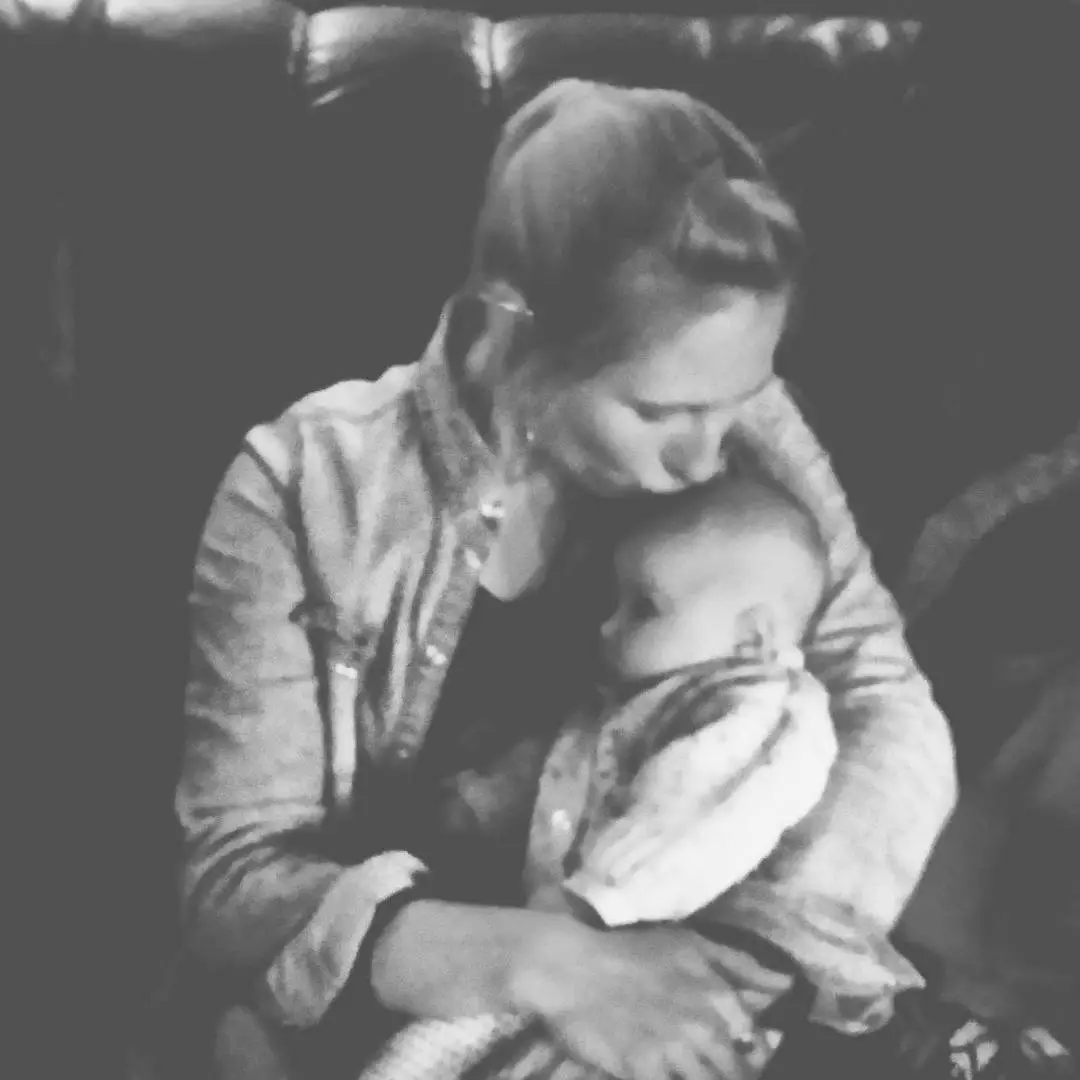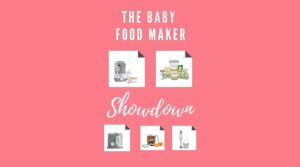For their first four to six months of life, babies gain nutrients exclusively through breast milk and/or formula feeding. Once they have physically developed enough to safely eat and digest solid food, baby-safe purees and cereals can be introduced.
As is the case with many milestones, your baby’s readiness for solids is determined by their personal developmental timetable. Fortunately, there are developmental milestones and behavioral cues to look for in deciding when it’s safe to introduce baby food.
Ready to learn more?
How to know if your baby is ready for solids
According to the American Academy of Pediatrics, foods beyond breast milk and formula should be introduced when a baby is around six months old.1When, What, and How to Introduce Solid Foods
cdc.gov/when-to-introduce-solid-foods… Some children may be developmentally able to handle purees and cereals by four months, while others may require a little extra time to hit the milestones pediatricians associate with safe feeding of solids.
These include:
- The ability to sit upright unassisted or with minimal support
- The ability to control head movements
- Demonstrating an eating reflex by opening their mouth and leaning forward in response to the offer of food
Your baby’s behavior may also show signs that they’re mature enough for baby food to be introduced, such as putting their hands or toys in their mouth. They may also develop a new interest in the food that you or other family members are eating, and may watch you eat or reach toward your food.
If you attempt to introduce baby food and your child pushes the puree or cereal out of their mouth with their tongue, be aware that their oral coordination and swallowing reflex are still developing. By eight months, this behavior typically stops as swallowing becomes more sophisticated.
Introducing new foods to your baby
When beginning your baby’s journey into the world of solid food, you may go the route of many parents and opt for a pediatrician-recommended baby cereal made with a single grain and fortified with iron.2When Can My Baby Start Eating Solid Foods?
kidshealth.org/en/parents/solid-foods
The mixture should be highly diluted at first, combining only a tablespoon or two of cereal with some water, formula, or breast milk — never cow’s milk (see Foods to Skip).
Meat purees that are rich in iron are another ideal option for your baby’s first solid food.
Feeding tips
- Once your baby has successfully tried their first puree or cereal, give them a few days before introducing a new food. This will help you to identify the cause of any allergic reactions your child may experience.
- During the early stages of solid food introduction, breastfeed or give formula before solids, as these should still be their primary sources of nutrition for the first year.
- While traditional wisdom once suggested holding off on feeding potentially allergenic foods to your child until they’re older, recent guidance released by the National Institute of Health suggests that children may be less likely to experience peanut allergies if they are exposed to peanut products during infancy.3Togias, A., Cooper, S. F., Acebal, M. L., Assa’ad, A., Baker, J. R., Beck, L. A., … & Boyce, J. A. (2017). Addendum guidelines for the prevention of peanut allergy in the United States: report of the National Institute of Allergy and Infectious Diseases–sponsored expert panel. World Allergy Organization Journal, 10(1), 1-18.
nih.gov - Always feed your baby with a small, soft-tipped baby spoon, which is sized to fit their palate comfortably and won’t harm their gums.
- Do not put cereal in your child’s bottle unless your pediatrician recommends it.
Safe food types by age
- 4 – 6 Months: Purees and baby cereals only
- 6 – 8 Months: Purees, baby cereals, yogurt, soft pasteurized cheeses, safe-sized pieces of bread or crackers
- 8 – 12 Months: Purees, baby cereals, yogurt, soft pasteurized cheeses, safe-sized pieces of bread or crackers, bite-sized steamed vegetables, soft cubes or strips of fruit, strips of scrambled egg, O-shaped wheat cereal, soft pieces of spiral pasta, small pieces of soft meat
Related: Baby-Led Weaning vs Purees, Does It Have to Be One or the Other?
Baby food preparation tips
Save for a few exceptions (see: Foods to Skip), your baby can eat most of the same whole foods you enjoy — all that needs to change is the texture. These tips can help you easily prepare food for your baby.4When, What, and How to Introduce Solid Foods
cdc.gov
- Use a steaming appliance, steamer pot, or microwave to steam fruits and vegetables, and mash with a fork or use a blender to create a puree
- When feeding whole grains, make sure they’re steamed until they’re very soft and can be mashed with the back of a spoon
- Add extra nutrients to grain purees and cereals by diluting them with a bit of breast milk or formula, which also makes swallowing easier
- When steaming poultry, meat, or fish, first remove bones, fat, and skin
After finger foods are introduced:
- Make sure that hard vegetables and fruits are still steamed and served in strips to prevent choking
- Always remove seeds or pits from softer fruits, and cut them into safe-sized pieces — small strips are always best, as they won’t block the airway in the event of choking.
- Likewise, cut round foods like string cheese or sausages into thin strips rather than cubes or rounds
- Small, soft foods like grapes and berries should be cut in half or quartered
Related: The Best Vegetables for Babies by Stage
Guidelines for successful food introduction
- If your baby rejects their first puree or cereal, it’s okay. They may not be quite ready, even if they’re hitting the milestones; just try again in a few days or a week.
- Just because your baby doesn’t seem interested in a particular puree once doesn’t mean you should give up on trying. Introduce it again in a few days, and see if they feel differently; if they keep rejecting it, then it might be a no-go.
- As we mentioned, it’s best to introduce your baby to one food at a time. This allows you to observe any allergic reactions without having to wonder about the specific culprit.
- This one is just for parents: If you’re not a culinary whiz but would prefer to avoid store-bought jars and pouches of baby food, you may wish to consider purchasing a baby food making system which includes a steamer, blender, and storage containers rather than buying individual appliances and storage.
Related: 6 Superfoods For Babies & How To Introduce Them
Foods to skip
While your baby can consume most whole foods when served in the appropriate texture, there are a few foods and additives that aren’t ideal for their developing digestive system.
- Honey: Though it’s rare, honey can contain spores of Clostridium botulinum — this is the bacteria which causes botulism. While a fully developed adult digestive system can stop these spores from growing before they start, your baby’s intestinal tract isn’t mature enough to do so, and potentially deadly toxins can be produced.5Abdulla, C. O., Ayubi, A., Zulfiquer, F., Santhanam, G., Ahmed, M. A. S., & Deeb, J. (2012). Infant botulism following honey ingestion. Case Reports, 2012, bcr1120115153.
ncbi.nlm.nih.gov - Cow’s milk: While your baby is naturally equipped to digest your breast milk and reap optimum nutrition from it, cow’s milk can never be considered a substitute. Not only does it not have the nutritional quality of breast milk, but the protein and fat quantities are not ideal for a child under one year, and are likely to be difficult to digest.6Cow’s milk and children
medlineplus.gov - Soft-ripened cheeses: Good news: you don’t have to share your charcuterie board with baby. Soft-ripened cheeses, aka “fancy” cheeses like bleu cheese, camembert, brie, and some goat cheeses are more likely to carry listeria, to which your baby is more vulnerable — using these cheeses cooked or baked is a safer alternative.7Foods to avoid giving babies and young children
www.nhs.uk - Salt and sugar: It’s healthier for your baby’s kidneys to not over-consume salt, and likewise their weight and dental health to avoid sugar. Neither are essential to their diet, and hooking them on salty, sugary foods early can lead to unhealthy dietary preferences down the road.8Foods to avoid giving babies and young children
www.nhs.uk
Our takeaways
While the average age at which a baby is able to begin eating purees and infant cereals is around six months, some babies are able to try solids as early as four months while others need a bit of extra time to hit milestones linked with safely introducing baby food.
Babies who can sit up straight without assistance, have good control of their neck and head, and who demonstrate an eating reflex, oral fixations on hands and toys, and interest in food being consumed by others are likely to be ready to try solids.
Though babies are able to eat most whole foods when they are properly prepared (purees only until 8 months, when soft finger foods may be introduced), a few foods, including honey, cow’s milk, unpasteurized cheeses, sugar, and salt should be avoided.
Keys to success include beginning with simple purees and cereals, introducing new foods one at a time, and following your baby’s lead; if they’re not ready, try again in a week or two.








